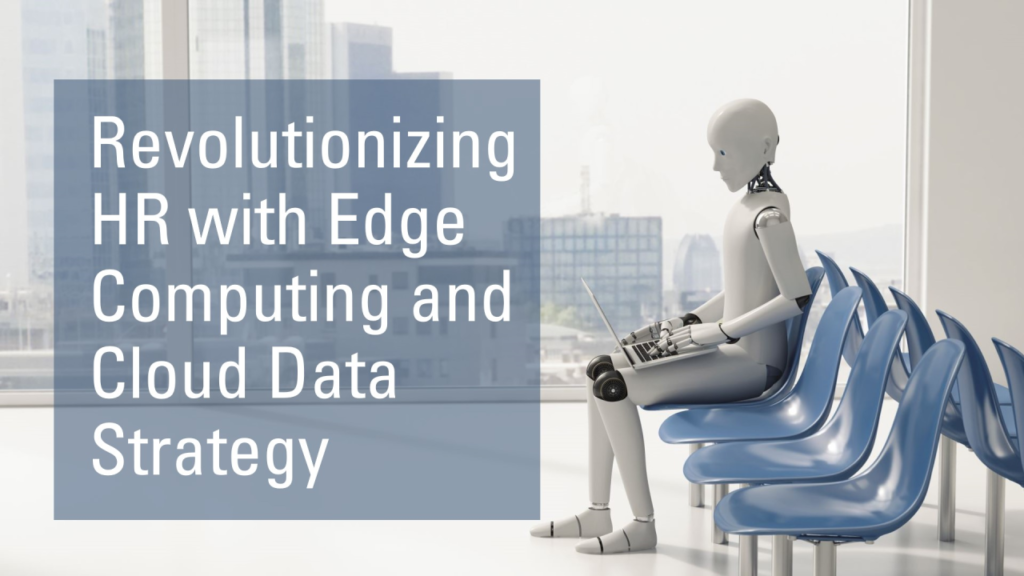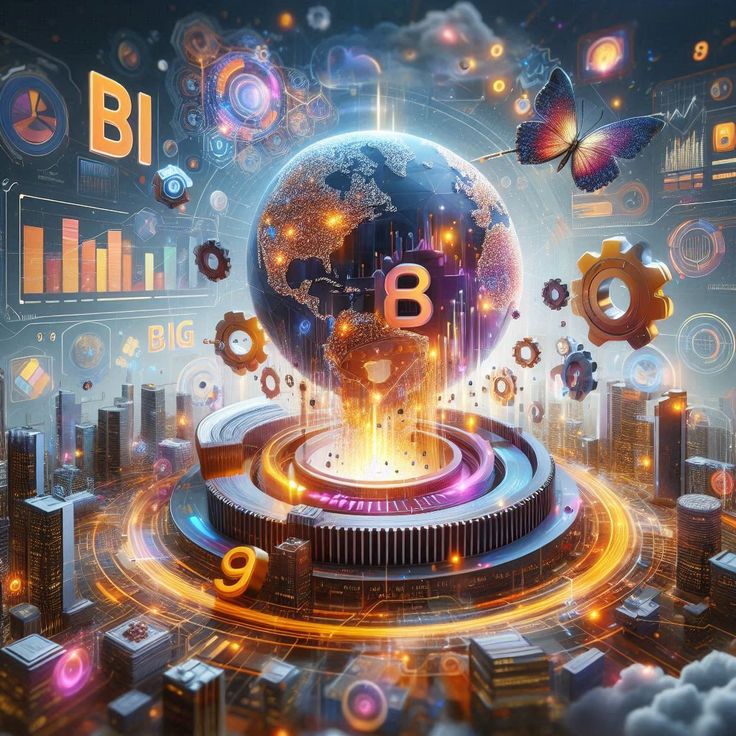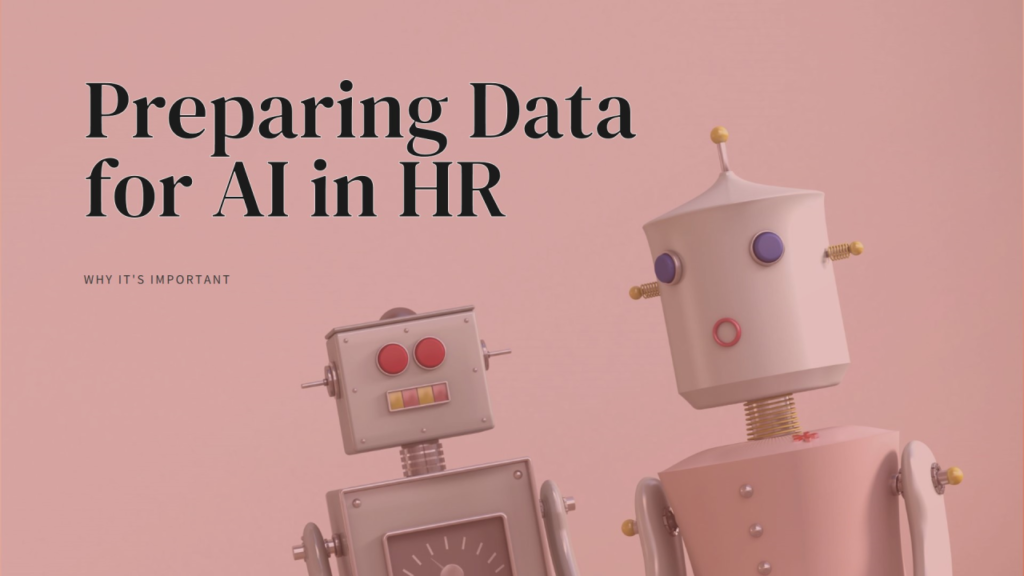Edge Computing and Cloud Data Strategy: Revolutionizing HR in the Age of AI

In today’s fast-paced business environment, human resource management is undergoing a massive transformation driven by artificial intelligence (AI) and data analytics. As businesses focus on leveraging technology to enhance employee experience and performance management, two critical technological advancements are playing pivotal roles: edge computing and cloud data strategies like data lakes. Both of these innovations, when applied effectively, are key enablers of AI in HR, providing real-time insights and driving operational efficiency.
In one of the companies where I’ve built a data lake for HR, it became evident how crucial it is to harness large volumes of HR data, not just for storage but for meaningful analytics. By integrating edge computing with cloud-based data lakes, companies can enhance their HR operations to deliver real-time insights that drive better decision-making and foster a more engaging employee experience.
The Role of data Lakes in HR
A data lake is a centralized repository that allows an organization to store structured and unstructured data at any scale. In HR, a data lake can store various forms of employee data, including performance metrics, engagement scores, feedback, recruitment information, learning and development records, and even intangible data like psychometric assessments and sentiment analysis. The ability to store diverse data sources is critical, especially when building AI-driven applications for HR that require a broad data set for training models.
1. AI-Powered Insights
With a data lake, HR teams can unlock the power of AI to make sense of large volumes of data that were previously unstructured or difficult to analyze. For example, AI models can analyze recruitment patterns, predict employee turnover, and provide insights into workforce trends. Additionally, by feeding historical employee data into AI models, HR leaders can develop personalized career development plans, predict future skills gaps, and make data-driven decisions about talent management.
2. Real-Time Employee Data for Enhanced Decision-Making
When edge computing is integrated with the cloud and data lakes, companies can process data at the point where it’s generated, enabling real-time decision-making. This is particularly beneficial in the context of HR, where timely insights are crucial for both employee experience and performance management. Instead of relying on batch data processing or waiting for centralized analysis, organizations can leverage edge computing to get instant insights from the data collected at different points (e.g., on-premise systems, devices, applications).
Edge Computing: Real-Time Insights for Employee Experience and Performance Management
Edge computing refers to processing data closer to where it’s generated rather than sending it to a distant data center or cloud. In HR, edge computing allows for real-time monitoring and feedback on employee performance, engagement, and productivity. For instance, in large organizations with distributed teams or multiple locations, edge devices can collect and process data locally, ensuring faster response times and immediate insights.
1. Real-Time Performance Monitoring and Feedback
In the context of employee performance management, edge computing offers significant advantages. Imagine a large workforce where performance data, such as project milestones, daily task completion, and productivity levels, are being generated continuously. With edge computing, this data can be analyzed in real-time, allowing managers to receive immediate feedback on employee performance. They can then take timely actions, such as offering support, adjusting workloads, or recognizing high performers.This real-time data processing aligns with AI-driven performance management systems, where machine learning models can analyze real-time data, provide recommendations for improvement, or highlight areas where employees may need training. Moreover, these real-time insights allow employees to adjust their performance dynamically, as feedback loops are shortened.
2. Personalized Employee Experiences
Employees are increasingly expecting personalized experiences at work, similar to what they experience as consumers. Edge computing can play a role in delivering real-time personalized insights to employees, enhancing their engagement and overall experience. For example, edge devices can track real-time engagement data, such as how employees are interacting with learning and development platforms, their level of participation in collaborative tools, or their response to wellness initiatives.
By analyzing this data, companies can create personalized development plans, offer immediate learning resources, or adjust workloads to prevent burnout. AI models can be integrated to provide real-time coaching and feedback, personalized for each employee’s unique work style and preferences.The Synergy Between Edge Computing and Data LakesWhile data lakes offer an opportunity to store vast amounts of HR data, edge computing enhances the ability to process and analyze that data in real time. This synergy is critical for AI applications in HR, as it allows organizations to:
• Harness Big Data for Predictive Analytics:
Data lakes house vast amounts of historical and real-time data, which can be leveraged to train AI models for predictive HR analytics. With edge computing, these insights can be delivered instantly, enabling predictive actions, such as identifying employees at risk of leaving, personalizing training programs, or dynamically adjusting employee engagement initiatives.
• Optimize Talent Management and Acquisition:
AI can analyze data from recruitment processes stored in data lakes, while edge computing ensures that real-time candidate assessments and feedback are processed immediately, streamlining hiring decisions. In industries where speed is critical to securing top talent, this combination provides a competitive edge.
• Improve Employee Well-Being:
AI-driven wellness applications can process health and engagement data through edge computing to provide real-time insights into employee well-being. For example, wearable devices that track physical activity or stress levels can be connected to edge systems that monitor this data continuously, while AI models stored in data lakes analyze trends to predict burnout or disengagement, prompting immediate support interventions.
Practical Applications of Edge Computing and Data Lakes in HR
1. AI-Enhanced Recruitment
Edge computing can support AI-driven recruitment processes by analyzing real-time candidate data, such as responses to interview questions, psychometric test results, and even social media activity. This information can be processed instantly, while historical hiring data stored in data lakes provides broader insights into talent acquisition strategies and outcomes.
2. Workforce Planning and Development
Data lakes allow HR leaders to store and access vast amounts of employee data, from skills assessments to past performance reviews. AI models can analyze this data to predict future workforce needs and recommend upskilling initiatives. Edge computing ensures that real-time learning data, such as engagement with training modules, is immediately processed, helping HR teams offer personalized learning paths.
3. Enhancing Employee Engagement and Retention
Edge computing allows companies to capture employee engagement data in real time, whether it’s through pulse surveys, collaboration tools, or work-related KPIs. Combined with a data lake that stores historical engagement data, AI models can predict trends in employee satisfaction and turnover risk, allowing HR leaders to take proactive measures to retain talent.
Conclusion:
As AI continues to reshape the HR landscape, integrating edge computing and cloud-based data lakes becomes essential to delivering real-time insights and optimizing employee experiences. While data lakes provide the infrastructure to store and analyze massive amounts of employee data, edge computing brings the power of immediate, actionable intelligence. Together, these technologies enable HR teams to build a more agile, data-driven approach to talent management, fostering a more engaging, productive, and purpose-driven workforce.
The combination of AI, data lakes, and edge computing will be the cornerstone of future HR strategies, allowing organizations to not only manage their workforce more effectively but also transform the employee experience in real time. By leveraging these technologies, companies can ensure that their HR practices are not just reactive but predictive and adaptive—driving long-term value in an AI-driven world.






Responses